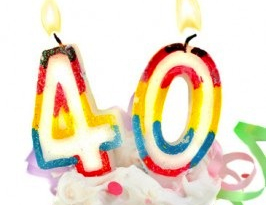Late motherhood is a growing trend in the United States with 8 times as many women giving birth to their first child beyond the age of 35 as compared to four decades ago.
The most important predictor of fertility is female age. As women age, egg counts and egg quality, defined as the egg’s ability to create a chromosomally normal embryo, both decline. This results in higher rates of infertility, miscarriage and childlessness.
Women are born with a set number of eggs. Every month, eggs are lost through ovulation and natural egg death. By age 30, women lose 88% of their life supply of eggs and by age 40, egg loss reaches 97%. The chance of a live birth from natural conception on a monthly basis declines from 20% at age 30 to 15% at age 35, 10% at age 40 and only 1-2% at age 45.
Based on the above, women should consider having children earlier in life in order to prevent infertility and childlessness. Those who are not ready to have children should consider a fertility check-up to estimate the number of remaining eggs and identify health factors that could impact later efforts to conceive. Women may also wish to consider fertility preservation by freezing eggs or embryos while they are still reproductively young.
Fertility Treatments
A variety of fertility treatments are available for women in their late 30’s and early 40’s who are having difficulty conceiving. In general, fertility treatments increase the chance of pregnancy by stimulating the ovary to grow multiple eggs as opposed to the one egg that typically grows each month. Multiple egg recruitment can be achieved by taking a fertility pill called clomiphene citrate or by daily injections of the hormone FSH.
Fertilization occurs by natural intercourse, artificial insemination or by harvesting the eggs and fertilizing them in a laboratory, a procedure called in vitro fertilization (IVF). For women over the age of 44, the only viable fertility option is to use egg donation. Surrogacy, whereby another woman carries the pregnancy, is usually reserved for cases where pregnancy poses a significant medical risk to the intended mother.
The chance of a live birth is primarily based on female age. Live birth rates per embryo transfer using in vitro fertilization, the most advanced fertility treatment, are approximately 40% for women under 35 and 20% for women age 40. After age 40, live birth rates per embryo transfer drop by 5% each year to a low of 1-2% by age 45. The live birth rate from egg donation is 55-65% per embryo transfer. Miscarriage rates rise from a low of 15% at age 30, to 30-40% between ages 40-44, to over 60% after age 45.
The underlying reason for these poor rates is waning egg quality, which leads to higher rates of chromosomal abnormalities within the embryo. For these reasons, egg donation is often recommended for women over 44 and those who continue to fail IVF treatments.
In 2009, almost 30,000 cycles of IVF were performed in the US on women over 40. There were approximately 18,000 egg donation cycles that same year. The costs of fertility treatments are high. This is primarily due to the lack of insurance coverage. In general, a cycle of artificial insemination costs $500-1000, a cycle of IVF $15,000, a cycle of egg donation $30,000 – 40,000, and a surrogacy cycle $80,000 – 100,000.
Maternal and Fetal Risks
There are increased risks associated with pregnancy as women age. Maternal risks include increased incidences of high blood pressure in pregnancy, gestational diabetes, and Cesarean section. Risks to the fetus include higher rates of miscarriage and birth defects, preterm labor and delivery, and low birth weight.
A lot of controversy surrounds the question of whether fertility treatments such as IVF contribute to maternal and fetal risks. There are reports demonstrating an association between fertility treatments and ovarian cancer, autism and some very rare genetic conditions called imprinting disorders. However, it is becoming clear that infertile women are different biologically than fertile women and that some of the maternal and fetal risks outlined above are attributable to being infertile and not to fertility treatments. There is also emerging evidence that older fathers may contribute to some of these adverse outcomes.
In order to properly interpret risks, women should remember that even though risk is quoted as multiple folds of a baseline value, overall risk still remains low when dealing with rare conditions. For example, if the baseline risk for a condition is 1 per 10,000 women, a 3-fold increase in risk would be 3 per 10,000, which is still pretty rare.
It should be remembered that over 4 million babies have been born worldwide from advanced fertility treatments over the past 30 years. Many of these children have reached adolescence and beyond and do not demonstrate an increase in developmental or cognitive deficiencies. Improved surveillance of women who undergo fertility treatment, including egg donors and the children born from these treatments will help to better define and quantify the true risks.
Women are seeking motherhood later in life and will continue to do so as they take on greater leadership roles in business and household. Women are not being adequately counseled on the seriousness of age-related infertility. Fertility treatments offer some opportunity, but come with high cost, low success rates, and the possibility of increased maternal and fetal risks.
Women can inform their reproductive choices by seeking good information on age-related infertility, undergoing a fertility check-up, and most importantly, by having children earlier in life.
by: Dr. John Jain

